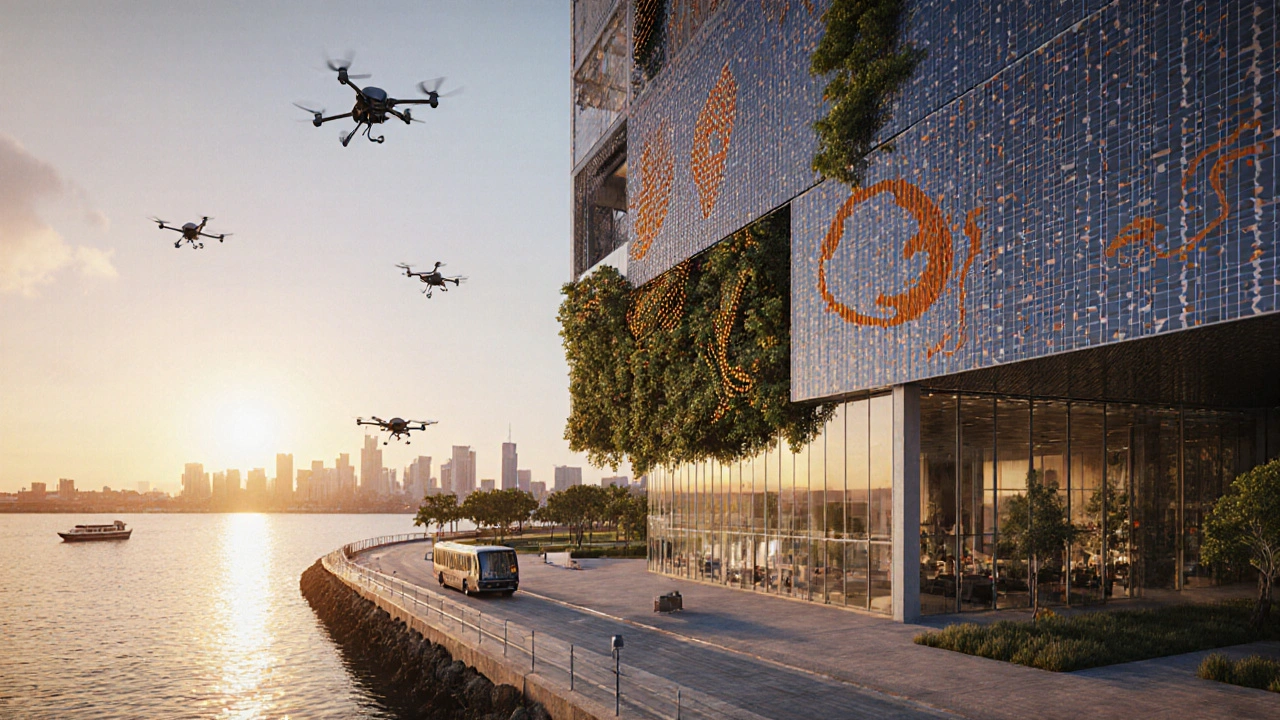Future Federal Architecture: What’s Coming Next?
When you walk into a new courthouse or a federal office tower, you expect more than marble columns and big windows. Today’s designers are asked to cut energy bills, boost security, and make spaces that adapt to changing work habits. The good news? The roadmap for future federal architecture already exists, and it’s packed with practical ideas you can see in projects now.
Green Tech and Energy Efficiency
First up, sustainability. Federal projects have to meet strict climate goals, so high‑performance insulation, solar facades, and rainwater harvesting are becoming standard. Think of a building that generates more power than it uses – net‑zero labs are no longer experiments, they’re real‑world sites. Materials matter too: recycled steel, low‑embodied‑carbon concrete, and timber cross‑laminated panels cut the carbon footprint without sacrificing durability.
Beyond the envelope, smart HVAC systems learn when rooms are occupied and dial back heating or cooling. Sensors feed data to a central dashboard, letting facility managers tweak settings on the fly. The result? Lower utility bills and a healthier indoor environment for employees.
Smart Systems and Adaptive Spaces
Technology isn’t just about saving energy; it’s about making buildings work for people. Integrated IoT networks connect lighting, security, and occupancy sensors so a conference room can reconfigure itself at the push of a button. Want a quiet work pod? The wall panels can shift, and the lighting color changes to signal focus mode.
Security is a big concern for federal sites, and biometric entry points are now paired with facial‑recognition cameras that alert staff to unexpected visitors. All this runs on a cloud platform that keeps data secure while giving admins remote control over any site across the country.
Modular construction also speeds up delivery. Prefabricated modules are built in a factory, then shipped and assembled on‑site in weeks instead of months. This approach reduces waste, minimizes disruption to surrounding neighborhoods, and lets architects experiment with flexible floor plans that can be re‑stacked as needs change.
Lastly, public engagement matters. Many new federal projects feature interactive displays that explain the building’s green features to visitors. When people see how a solar panel array powers the lobby, they’re more likely to support future investments in sustainable design.
All these trends point to one clear idea: future federal architecture isn’t just about looks; it’s about performance, adaptability, and responsibility to the community. By marrying green tech, smart systems, and modular methods, government buildings can become models for the private sector and a source of pride for citizens.
Ready to see these ideas in action? Keep an eye on the latest federal construction announcements – the next courthouse you pass might already be a living example of the future we’re building today.

Future of Federal Architecture: Sustainable, Smart & Inclusive Design
Explore how federal architecture in Australia will evolve with sustainability, smart tech, indigenous influences and net‑zero goals, reshaping public buildings for the next decade.
Read more